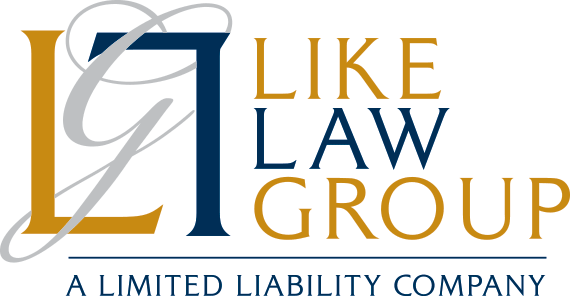In December 2017, Congress passed, and President Trump signed a sweeping tax reform bill commonly known as the Tax Cuts and Jobs Act. This new Act contains several significant changes that will impact your clients and their estate planning.
Estate Tax Changes
Starting January 1, 2018, the estate, gift, and generation-skipping transfer (GST) tax exemptions double from $5 million to $10 million (adjusted for inflation). For 2018, the exemption is now $11.2 million per person ($22.4 million for a married couple). As was the case under prior law, the exemption will adjust annually for inflation, providing us with additional opportunities each year for clients who decide to utilize this new exemption sooner, rather than later. This doubled exemption remains in effect until December 31, 2025, at which time the law sunsets and the exemptions revert to the $5 million level (indexed for inflation).
These changes open significant opportunities to remove assets from estates and permanently exempt future appreciation of those assets from estate, gift, and GST taxation. Of course, whether tax-driven planning is appropriate for a client depends on many factors. For clients of considerable wealth, now may be the perfect time to implement strategies like a dynasty trust, a spousal lifetime access trust, a domestic asset protection trust, or a charitable remainder trust. For clients whose net worth is less than the exemption, we still must review and possibly revise prior estate plans to ensure that any “old” tax-driven language still achieves the client’s goals. For example, a client with assets of $8 million whose trust uses a formula to allocate assets may have been comfortable with a $5 million credit shelter trust and the $3M balance of their estate going into a marital trust, but may be concerned about funding their entire $8M estate into a creditor shelter trust. You should encourage all of your clients to review the current plan and any tax driven language with their estate planning lawyer.
Obviously, estate tax planning is only one aspect of estate planning. Incapacity issues, protecting financially imprudent heirs, asset protection, avoiding probate, and minimizing income taxes are all other aims that can be achieved with proper estate planning. Some clients may mistakenly believe that they do not need estate planning because of the increased exemption. In addition to working with your clients who are affected by the estate tax, we also welcome the opportunity to discuss the many benefits of comprehensive estate planning with any clients who still haven’t moved forward with their planning.
Changes to Individual Taxation
The Act retains a seven-bracket rate structure but changes the income level and rate for each bracket. In addition, the standard deduction has increased from $6,350 to $12,000 for individuals and $12,700 to $24,000 for married couples. However, the personal exemption deduction has been repealed.
The widening of brackets, rate reductions, and increase in standard deduction are all intended to offset the repeal of the personal exemption. Congress’s intended result is lower effective income tax rates for individuals. The increase in the standard deduction will likely reduce the number of clients who itemize, so tax season in 2019 (when 2018 tax returns are filed) will probably be a little less arduous for many clients. Some good news for advisors is that since less time will need to be spent discussing what can be itemized, more time can be spent on big-picture strategies to build and protect wealth.
The capital gains rate and net investment income tax are unchanged. The top long-term capital gains rate remains at 20 percent, and the net investment income tax rate remains at 3.8 percent.
Like the changes to pass-through businesses (more below), these changes to the standard deduction, brackets, and the personal exemption are in effect from January 1, 2018, through December 31, 2025.
Pass-Through Business Changes
For business-owner clients, the reform of pass-through business taxation is likely an incredibly welcome change. This impacts sole proprietorships, partnerships, S corporations, and LLCs taxed as partnerships or S corporations. The Act provides for a 20 percent deduction for most pass-through businesses which reduces the effective top tax rate to 29.6 percent (37 percent highest bracket less the 20 percent deduction yields a 29.6 percent effective rate). Owners of some service businesses, including those in the fields of health, law, consulting, athletics, and financial services, are subject to income limitations. High-income earners engaging in those types of businesses will not receive the 20 percent deduction, but other strategies are available to help them reduce their income tax burden. Give us a call today so we can strategize with you and your high-income clients about the options.
This 20 percent deduction mentioned above is available from January 1, 2018, through December 31, 2025. If you have clients that are considering transitioning to or opening a new pass-through business entity encourage them to seek out the advice of their CPA on the proper structure. Depending on a client’s goals, the reduction in the C corporation rate (from up to 35 percent to a flat 21 percent) may also make a C corporation a potentially attractive option. Again, those clients need the advice of a good CPA who understands these new laws and can help apply those to the client’s unique situation. We are also here to help and be part of that professional advisor team.
Putting It All Together
The Act is perhaps the most significant tax legislation in over 30 years. Continued study and experience with the Act will undoubtedly reveal numerous tax planning opportunities. Stay tuned for more details. In the meantime, feel free to give us a call with any questions you or your clients may have about tax reform or estate planning.
This newsletter is for informational purposes only and is not intended to be construed as written advice about a Federal tax matter. Readers should consult with their own professional advisors to evaluate or pursue tax, accounting, financial, or legal planning strategies.


